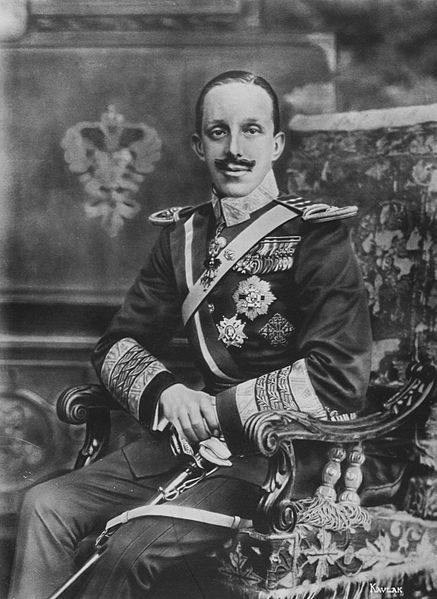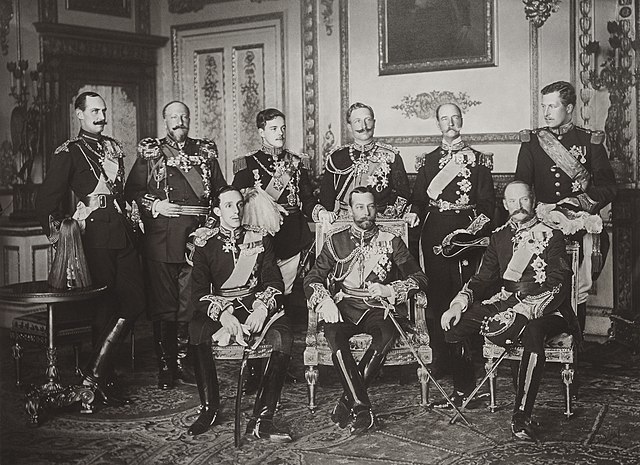Alfonso XIII, also known as El Africano or the African due to his Africanist views, was King of Spain from his birth until 14 April 1931, when the Second Spanish Republic was proclaimed. He became a monarch at birth as his father, Alfonso XII, had died the previous year. Alfonso's mother, Maria Christina of Austria, served as regent until he assumed full powers on his sixteenth birthday in 1902.
Formal portrait, 1916
Alfonso XIII as a cadet; by Manuel García Hispaleto
The Nine Sovereigns at Windsor for the funeral of King Edward VII, photographed on 20 May 1910. Standing, from left to right: Haakon VII of Norway, Ferdinand I of Bulgaria, Manuel II of Portugal, Wilhelm II of Germany, George I of Greece and Albert I of Belgium. Seated, from left to right: Alfonso XIII of Spain, George V of the United Kingdom and Frederick VIII of Denmark.
Photograph taken moments after the assassination attempt on Alfonso and Victoria Eugenie on their wedding day
The monarchy of Spain or Spanish monarchy is the constitutional form of government of Spain. It consists of a hereditary monarch that reigns as the head of state, being the highest office of the country. The current King is Felipe VI since 19 June 2014, after the abdication of his father, King Juan Carlos I.
Monarchy of Spain
Felipe of Bourbon and Greece takes the oath before the Cortes Generales during the proclamation ceremony at the Palacio de las Cortes, Madrid the 19th of June, 2014.
Statue of Queen Urraca in the Parque del Buen Retiro in Madrid. Urraca succeeded as queen in 1108.
A copy of the Spanish Constitution, signed by King Juan Carlos, is held at the Palace of the Cortes.








